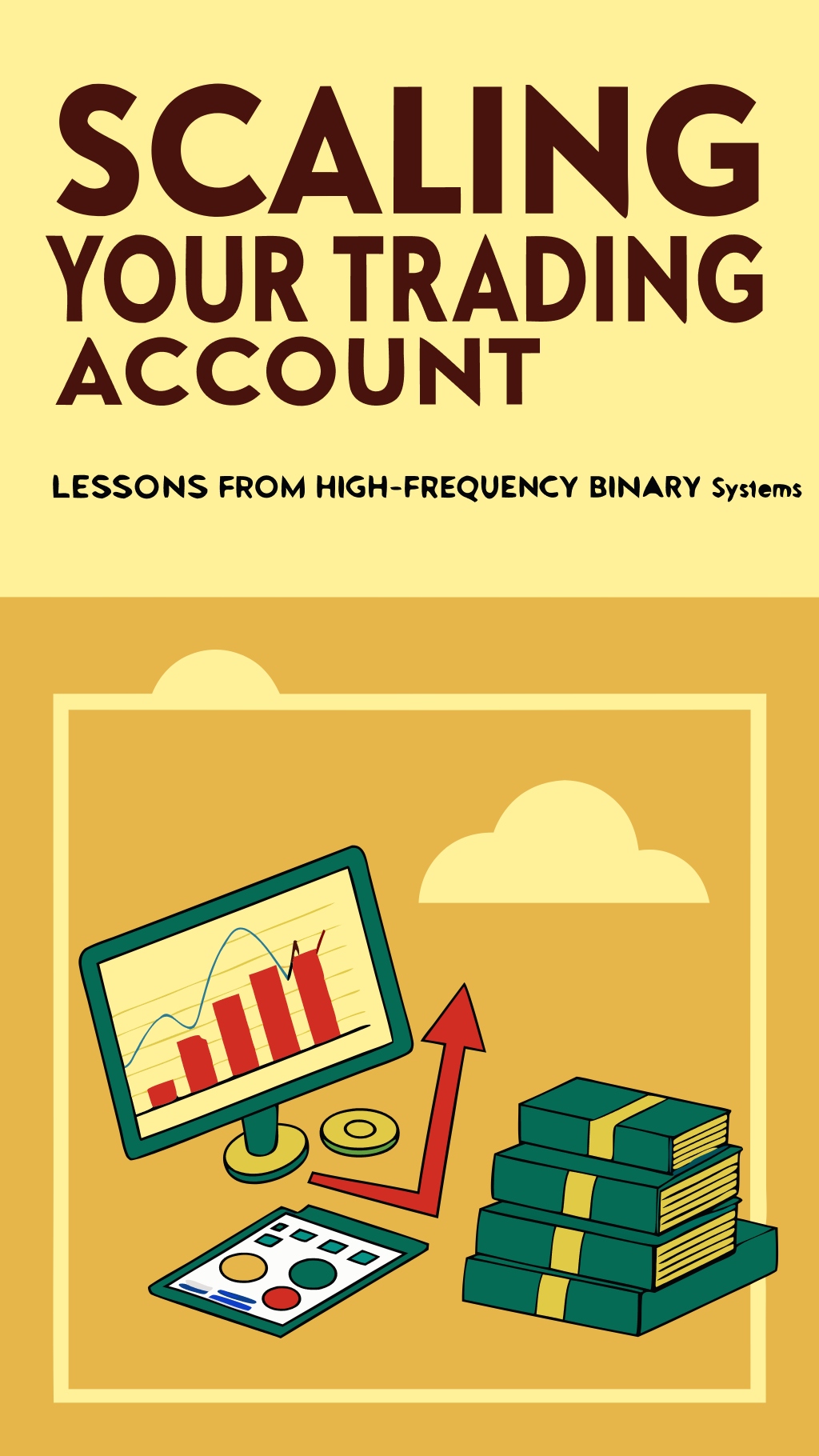Scaling Your Trading Account – Lessons from High-Frequency Binary Systems
Imagine you’re a seasoned hunter, not blasting away at every rustle in the underbrush, but methodically building your arsenal—starting with a single, reliable shot and scaling up to a full quiver as your skills sharpen. That’s the mindset for scaling a trading account in high-frequency binary systems like NADEX RED 2.0. It’s not about reckless bets or overnight windfalls; it’s about the disciplined art of compounding wins, layer by layer, while keeping your cool under pressure. Rush the process, and you risk scattering your gains like startled prey. In this post, we’ll break down the lessons from these systems, focusing on starting small, ramping up position sizes with intent, and mastering the mental fortitude to let profits accumulate over time. Drawing from the core strategies in NADEX RED’s 20-minute binary options approach, we’ll see how this patient build turns modest starts into commanding dominance.
At its heart, scaling your trading account means harnessing the power of compounding—taking consistent, moderate-frequency trades and methodically increasing your stake as results prove reliable. The NADEX RED 2.0 system exemplifies this with its performance samples, showing how a daily average of $8,875 on 10 contracts can scale to $88,750 on 100 contracts, all while maintaining a stable approach . This isn’t fantasy; it’s rooted in the system’s design for quick profit grabs on 20-minute expirations, where you enter on momentum bursts and ride to the close without constant interference. But the key lesson here? You don’t leap straight to those big numbers. Start small, prove your edge, and let the wins build your base.
Why emphasize starting small? Because high-frequency systems thrive on repetition, and jumping in too deep too soon amplifies every misstep. Picture entering the market with just one contract, grooving into the system’s rhythm through demo practice on historical charts from spots like barchart.com . The PDF outlines this clearly: learn the system via home study, jot down questions for support, study prior days, and demo until you’re in sync . Once comfortable, trade real funds at the smallest size—say, aiming for that $887.50 in four days on a single contract from the sample . This phase is crucial for the mental game; it trains you to stay calm, avoiding the emotional whirlpool of greed or fear that derails so many. Rushing to larger positions without this foundation? It’s like hunting with unsteady hands—you miss more than you hit, eroding your account instead of growing it.
As wins stack up, the real psychology kicks in: maintaining composure while scaling. High-frequency binaries like RED 2.0 offer a moderate pace—think 10 to 20 trades in a session, netting samples like 18 wins against 5 losses for $6,500 on 10 contracts . The discipline here is in recognizing when to increase: only when trades feel calm and controlled, not forced . It’s about stalking your progress, pouncing on the right moment to add contracts. I’ve seen how this methodical build fosters resilience; each successful layer reinforces your strategy, turning isolated profits into a compounding machine. Contrast this with the chaos of forex or emini trading, where open positions demand endless vigilance—NADEX’s “enter and done” style keeps it simple, letting you focus on scaling without burnout .
Let’s make this tangible with a progression example straight from the system’s playbook. Suppose you begin with 1 contract, netting an average $887.50 over four days as per the sample . After a week of consistent results, bump to 5 contracts, potentially pulling in $4,437.50 in the same span. Groove deeper, confirm your edge through more demos and real trades, then scale to 10 for that $8,875 daily average . The mental edge? You’re not just growing money; you’re building unshakeable confidence. Patience in this ramp-up prevents the pitfalls of overleveraging— one hasty scale on a shaky day could wipe gains, but disciplined steps ensure stability. The system stresses this: don’t rush; increase only when it feels right, aligning with the hunter’s instinct to conserve energy for the long haul .
Of course, scaling isn’t without its challenges, and that’s where strategy meets psychology head-on. Markets throw curveballs—volatility can turn a burst into a bust—but systems like RED 2.0 are built for dependability, with 100% winning days in samples when traded fully as a system . The lesson? Treat scaling as a skill honed over time, not a sprint. Use support tickets for clarifications, review historical data to spot patterns, and always prioritize calm execution . This approach sidesteps emotional traps, like chasing losses after a subpar day (e.g., the sample’s 9 wins to 8 losses netting just $500) by sticking to the plan and scaling back if needed . Over time, this discipline compounds not just profits, but your ability to command the markets on demand.
Wrapping it up, scaling your trading account with high-frequency binary systems boils down to a blend of strategic layering and mental steadfastness—starting small, building methodically, and staying composed as wins accumulate. Lessons from NADEX RED 2.0 show how this can lead to substantial growth, from modest daily averages to six-figure potential, all through patient, repeatable actions . Avoid the rush; it’s the surest way to falter. Instead, stalk your progress, pounce on proven moments, and watch your account evolve into a powerhouse. Have you tried scaling in binaries before? What held you back, or what made it click? Drop your thoughts in the comments—let’s sharpen those strategies together.







